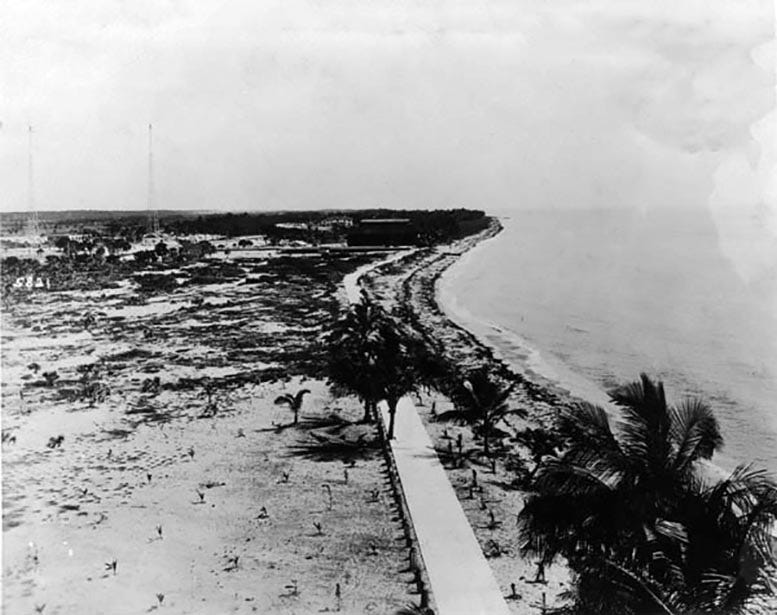Incorporation of Miami Beach in 1915
The barrier island east of Miami went from a coconut plantation in the 1880s to the Town of Miami Beach on March 26, 1915. The municipality would re-charter as the City of Miami Beach in 1917.
** Article originally published in March of 2015 **
On March 26, 2015, Miami Beach will celebrate the centennial of its first incorporation date. Since 1915, Miami Beach has become one of the most prominent tourist destinations in the United States and was referred to by one of its founders as “America’s Playground” during the heyday of its formative years.
The land that became Miami Beach began with rather humble beginnings. Prior to 1882, the only inhabitants of the land were those who sought sanctuary at the Biscayne House of Refuge. There were eleven structures built along the Florida coast to provide relief to any ship wreck survivors that made it to shore in proximity of these aid stations. The Biscayne House of Refuge was located near today’s 72nd Street on Miami Beach. The arrival of three entrepreneur’s from New Jersey began a series of events that led to the incorporation of Miami Beach as a town on March 26 in 1915.
Originally a Coconut Plantation
In 1882, Elnathan Field, Ezra Osborn and Henry Lum purchased about sixty miles of oceanfront land extending from Key Biscayne to Jupiter, Florida. Their plan was to start a Coconut Plantation. At the time, Coconuts were a valuable crop for the hush fiber and coconut oil.
Coconut palms were not indigenous to this area, so the three men needed to bring more than 300,000 coconuts from Trinidad, Nicaragua and Cuba. They hired off season life guards from Atlantic City to help them plant along the coast of the land that they had purchased.
Hannibel Pierce and his son Charles were the keepers of the Biscayne House of Refuge in 1883 and were tasked with greeting and organizing the landing party that included the three businessmen and their helpers. The three men quickly learned that the elements and conditions of the land were going to make the area inhospitable to cultivating a successful coconut plantation.
The coconuts sprouted tiny seedlings and Henry Lum and his cohorts eagerly looked forward to a profitable crop. However, the sprouts proved also to be very appealing to the island’s large rabbit population. Lum battled the rabbits and other critters for seven years before abandoning his effort to make the island a successful plantation. Henry Lum died in 1895 and his share of the land went to his son Charles.
Then a Fruit Plantation
One of the investors in the plantation was John Collins. Collins was considered a pioneer in fruit cultivation and decided he wanted to see if he could find success with a different crop. In 1907, Collins began planting avocado and mango trees brought over from Miami. He added tomatoes, potatoes and bananas to generate cash flow while the trees matured.
Once these crops were ready for shipment, Collins realized his biggest effort would be to haul his harvest to Miami for shipment. It had to be loaded on a wagon, hauled through the mangroves and loaded on a boat to get across the bay for shipment by train. After four years of this process, Collins decided to dredge a canal directly from the location of his crops to Biscayne Bay.
However, John Collin’s farming operations were draining his cash reserves. He asked his children and their spouses for financial assistance. He urged them to come see his operations in Miami. After spending a day at his plantation, his children were convinced that this place could become an incredible seaside resort. The south side of the island had already become a popular day trip destination for the residents of Miami.
The Bathing Casinos
Keep reading with a 7-day free trial
Subscribe to Miami History to keep reading this post and get 7 days of free access to the full post archives.





